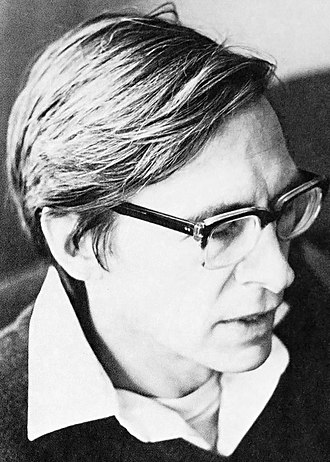Rawls, John

Bio: (1921–2002) American political philosopher. John Rawls got his BA and Ph.d. in philosophy from Princeton, and after that want to study at Oxford. At Oxford, his professor was political philosopher Isaiah Berlin, who spiked interest in Rawls to topics of law, justice, and deliberative democracy. After his return to USA Rawls taught for a few years at Cornell and then at MIT. He moved to Harvard University in 1962 and stayed there until his retirement in 1991. His work left a resounding influence upon various fields: political philosophy, political science, economics, sociology, social work, theology, and law.
A Theory of Justice
Rawls is most famous for his very influential book A Theory of Justice (1971), which was based on several of his essays published over the years: “Justice as Fairness” (1958), “Constitutional Liberty” (1963), and “Distributive Justice: Some Addenda” (1968). In A Theory of Justice Rawls takes inspiration from the political philosophers of social contract tradition, especially Thomas Hobbes, John Locke, Jean-Jacques Rousseau, and Immanuel Kant, in order to develop his political philosophy. Rawls, like the philosophers mentioned above, wanted to paint a picture of the best society for all people. To do so he starts by proposing a fictional hypothetical scenario, kind of a “thought experiment”, in which hypothetical individuals start from, what he called, “the original position.” In that original position, individuals are rational actors who have to conjure the best society, but the challenge they face is that they are faced with “the veil of ignorance.” The veil of ignorance refers to the fact that those hypothetical individuals do not have any knowledge about their individual characteristics: ‘‘no one knows his place in society, his class position or social status, nor does anyone know his fortune in the distribution of natural assets and abilities, his intelligence, strength, and the like’’ (Rawls 1971, p. 12). Rawl presupposes that people would use the method of “reflective equilibrium”, that is, common agreement is to be achieved through rational deliberation and mutual adjustment, based on general moral principles, of which justice is the most important one. The goal is to create norms for the distribution of “primary goods” – rights, liberties, political and legal institutions, and wealth – that are created by social cooperation. Individuals participating in this thought experiment should create the “basic structure” - the most important political, legal, and economic institutions – that will be responsible for the distribution of primary goods to all. Rawls argues that the only rational solution for the framing of the basic structure, that incorporates the conception of justice, is the one based on two principles – the “principle of liberty” and “principle of difference”. The principle of liberty states that everybody has the most extensive basic liberties, insofar as they don’t restrict similar liberties of others. Liberties afforded to all people would include: ‘‘political liberty (the right to vote and to be eligible for public office) together with freedom of speech and assembly; liberty of conscience and freedom of thought; freedom of the person along with the right to hold (personal) property; and freedom from arbitrary arrest and seizure as defined by the concept of the rule of law’’ (Rawls 1971, p. 61). The principle of difference states that social and economic inequalities are permitted only to the extent that they are based on individual contributions that benefit all, in the conditions of equal opportunity for all to access every position or function in a society, otherwise, the system should redistribute primary goods in a way that would give the most benefits to the people with the least advantages. This system would guarantee the best outcomes (maximization of primary goods) for the ones who are in the worst position. Similarly, equality of opportunity goes beyond legal equality and necessitates equal access to education, training, and other resources. Rawls sees his approach to justice as “justice as fairness”, that is, the one that would lead to a true meritocracy.
Later Works
Rawls’ book Political Liberalism (1996) explores the relationship between democratic pluralism and the plurality of „comprehensive doctrines“ - religious, philosophical, ideological, and ethical worldviews. He concludes that individuals and groups that support opposite views can achieve an “overlapping consensus” by applying the principles of justice as fairness as it minimizes the possibility of conflict as it (justice) remains neutral to those views while encouraging rational debate and tolerance, and allows everybody to pursue their interests and their version of the good life.
In The Law of Peoples (1999) Rawls extends the principles of justice as fairness to international relations and international justice. In his final book Justice as Fairness: A Restatement (2001) he argues that the principles he introduced in A Theory of Justice should be understood more as a political guideline, rather than as a strict moral doctrine.
Fields of research
Actors Altruism Citizenship Conflict Cooperation Democracy Discrimination Economy Egalitarianism Human Rights Identity Ideology Inclusion Individualism Inequality, Social International Relations Law Liberalism Morality Politics Poverty Rationality Religion Solidarity State Status ToleranceMain works
A Theory of Justice (1971);
Political Liberalism (1993);
A Theory of Justice, 2nd revised edn. (1999a);
The Law of Peoples; with, The Idea of Public Reason Revisited (1999b);
Lectures on the History of Moral Philosophy (2000);
Justice as Fairness: A Restatement (2001);
Lectures on the History of Political Philosophy (2007);
A Brief Inquiry into the Meaning of Sin and Faith (2010).

